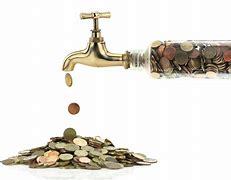
What is microeconomics?
Microeconomics is the social science that studies the implications of incentives and decisions, especially their impact on the use and distribution of resources. It shows how and why different goods and services have different values, how individuals and firms conduct and benefit from efficient production and trade, and how individuals coordinate and cooperate better with each other. In general, microeconomics offers a more complete and detailed understanding than macroeconomics.
Understanding microeconomics
Microeconomics is the study of trends (what can happen) when individuals make decisions in response to changes in incentives, resources, prices, and/or production methods. Individual actors are usually grouped into microeconomic subgroups, such as sellers, buyers, and entrepreneurs. These groups create the demand for and supply of resources, using money and interest rates as a pricing mechanism for coordination.
The uses of microeconomics
Microeconomics can be applied in a positive or a normative sense. Positive microeconomics describes economic behavior and explains what is expected if certain conditions change. If a manufacturer raises the prices of a good, the positive microeconomics indicates that consumers will tend to buy less than before. If a large mineral resources mine collapses in Argentina or Brazil, the price of the natural resources will tend to rise because supply is limited. Positive microeconomics can help an investor understand why Samsung's stock prices might decline if consumers buy fewer devices from Samsung. Microeconomics can also explain why a higher minimum wage might force a company to hire fewer workers.
These positive microeconomic explanations, conclusions, and predictions can also be applied in a normative fashion to prescribe what individuals, businesses, and governments must do to achieve the most valuable or beneficial models of production, trade, and consumption among the most popular market players. This extension of the implications of microeconomics from what it is to what it should be or what people should do also requires the implicit application of some sort of ethical or moral theory or principles, which generally means a form of utilitarianism.
Basic Concepts of microeconomics
The study of microeconomics involves many key concepts, including (but not limited to):
Incentives and behaviors: how people react to the situations they are confronted with as individuals or in a company.
Price theory: The theory of utility and production interact to produce the theory of supply and demand, which determines prices in a competitive market. In a perfectly competitive market, it concludes that the price asked by consumers is the same as the price offered by producers. The result is an economic balance.
Production theory is the study of production or the process of transforming inputs into products. Manufacturers choose the combination of inputs and methods to combine them, which minimizes costs to maximize profits.
Utility Theory: Consumers will choose to buy and consume a combination of goods that will maximize their happiness or "utility," subject to restrictions on the amount of income they have available to spend.
Method of Microeconomic
Historically, the microeconomic study has been conducted according to the theory of general equilibrium, developed by Léon Walras in Elements of Pure Economics (1874). Alfred Marshall introduced partial equilibrium theory in Principles of Economics (1890), an umbrella larger than neoclassical microeconomics. Neoclassical economics focuses on how consumers and producers make rational decisions to maximize their economic well-being, subject to limitations on the amount of income and available resources. Neoclassical economists make simplified assumptions about markets, such as perfect knowledge, an infinite number of buyers and sellers, homogeneous goods, or static variable relationships, to build mathematical models of economic behavior.
These methods attempt to represent human behavior in functional mathematical language, allowing economists to develop mathematically verifiable models of individual markets. Neoclassicists believe in building measurable assumptions about economic events, then using empirical evidence to see which assumptions work best. As such, they remain within the branch of the philosophy of "logical positivism" or "logical empiricism." Microeconomics applies a variety of research methods, depending on the question being studied and the behaviors involved.
Summary
Micro economists formulate various models based on observed human behavior and logic and test models based on real-world observations.
Microeconomics deals with prices and production in individual markets and the interaction between different markets but leaves the study of economic aggregates to macroeconomics.
Microeconomics studies the decisions of firms and individuals to allocate resources to production, trade, and consumption.
FOR MORE INFORMATION ON HOW UNIFIRST FINANCIAL & TAX CONSULTANTS CAN BEST HELP YOU WITH YOUR TAX FILING NEEDS, PLEASE CLICK THE BLUE TAB ON THIS PAGE.
THANKS FOR VISITING.
